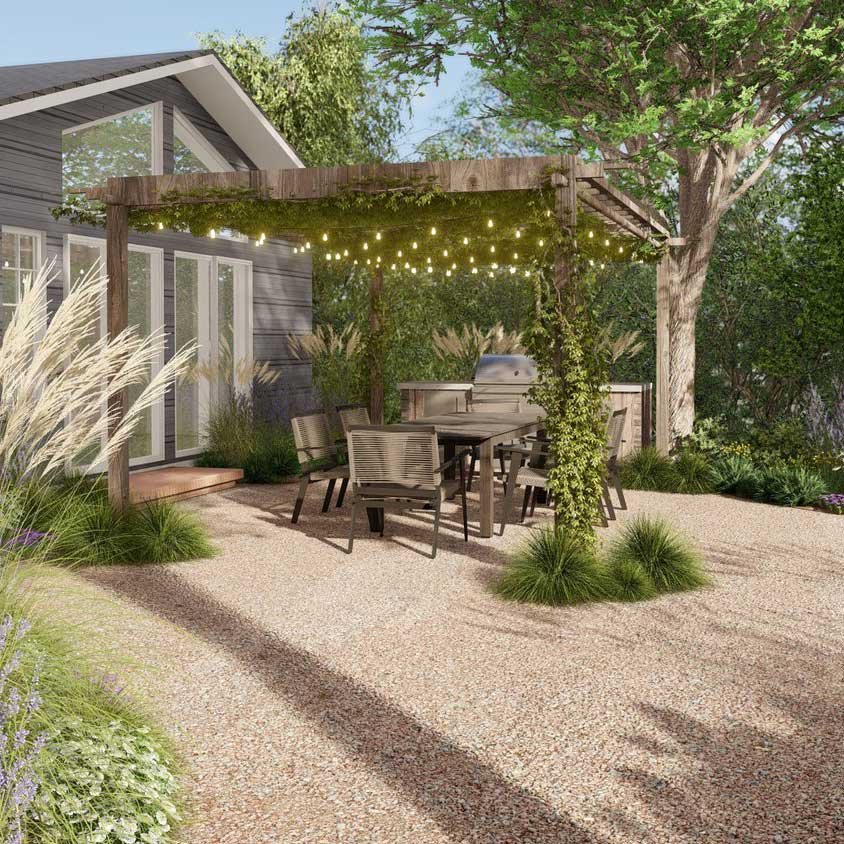Landscapers - The Facts
Table of ContentsLandscapers Fundamentals Explained9 Easy Facts About Landscapers ExplainedFacts About Landscapers UncoveredLandscapers Fundamentals ExplainedOur Landscapers StatementsLandscapers - Questions
- A garden feature where water is represented by an accumulated rock item, usually a crushed rock or granite. These are most generally found in modern-day and Japanese yard layout.- A stone or flagstone outdoor patio, path, or pathway built without a concrete base. The base would be compressed crushed rock and the joints would certainly be an aggregate or walkable ground cover.- A stone retaining or totally free standing wall surface constructed without the usage of mortar. An extremely knowledgeable mason is required for a completely dry pile stone wall. A lot of wall surfaces in Rose city are not completely dry stacked, even if they seem. - A below ground framework that gather water and permits it to reduce percolate right into the soil around it.
Landscape style that is suitable with a sites' setting in both appearance and sustainability without unfavorable influences to the environment. Edging in the landscape is a line of separation that develops visual rate of interest in the yard by dividing one section from an additional sector.
Locations can also have a sensation of "room" offered by trees, various other growings, fencings, or displays. The landscape near the access to a building.
Some Known Questions About Landscapers.

The component in a landscape style or location in a landscape that is meant to be most famous. The focal point can be a plant, rock, statuary, collecting space, or various other landscape feature.

What Does Landscapers Mean?
Rock product, either rounded or fractured, that is relatively small- typically 1" or much less. Low plants that are enabled or motivated to spread out over a location. Can refer to any type of "difficult" yard elements consisting of statuary or rocks yet the majority of typically is utilized to refer to paths, outdoor patios, and walls.: Elevation distinction between the degree of water in a fish pond (or the degree of the pump if it sits outside the pond) and the top electrical outlet of water which influences performance of the water pump in gph (gallons per hour). Thick shrubs or trees that develop a fencing, screen, or boundary.
Fencing boards that run horizontally, typically used in modern-day or Japanese-inspired landscape layouts. Appropriate usage of fictional lines can assist the landscape really feel linked to the home and other elements.
An even more unwinded yard dominated by curved instead than straight bed lines and a much less stiff structure. Typical PNW landscapes are casual. A plant that spreads out more than preferred, or into environments where it does damage. Portland has a list of invasive plants that should not be installed in landscapes due to the fact that they can infect woodlands or waterways and be tough to control.
Landscapers for Beginners
Can consist of head positionings and Recommended Reading protection, pipe sizing, GPM specifications, and products needed to install this system. Licensed specialist that designs landscapes, coached in engineering and architecture as well as in horticulture.
Landscape designers usually have much less education than Landscape Architects and are not accredited. A finished landscape layout, outlining all aspects for the new landscape.
Calcium product made use of to raise the pH in dirt, which will certainly make it less friendly to moss (Landscapers). A water limited HDPE material made use of beneath ponds, streams and waterfalls in water features. Using several plantings of the exact same variety to fill in a location in the landscape. This can decrease maintenance and water usage in the yard.
A mix of concrete, sand, and water that is utilized in rock masonry for setting stones and joints. A layer of garden compost or bark dirt applied at the base of a plant. A mass growing of moss. A plant that was existing in a geographic place before people started altering the landscape.
About Landscapers
Exactly how the yard or a garden element is set up in connection to an existing or new function or to a direction. Maintaining a lawn without using chemical herbicides, chemicals, or plant foods. Yards that are not trimmed yet expanded in landscapes as perennials. This is a partly open sided leisure or recreation area that joins a residence, made use of for entertaining, outside view website dining and merely taking pleasure in the outdoor setting.

Little round gravel. Plants that provide seasonal rate of interest and after that die back in the wintertime. Annuals do not come back the adhering to season, however perennials do. Cold period turf that is the most common turf yard in Rose city, OR et cetera of the PNW.An open roofed framework over a patio or other landscape attribute.
Basalt aggregate varying in dimension from 1/4" to dust. The most typical landscape gravel in the PNW. Area of the landscape created to handle rainfall water until it can soak into the ground. A chain that manages water as it takes a trip from a roofing system rain gutter to the ground. Yard framework that develops a planting area that is included and more than the bordering quality.
Producing a garden attribute being composed mainly of rocks with growings that enhance and can grow in the rocky setting. Lawn sprinkler head design that rotates a stream of water additional reading throughout an area.
The smart Trick of Landscapers That Nobody is Discussing

Comments on “7 Simple Techniques For Landscapers”